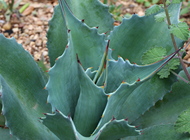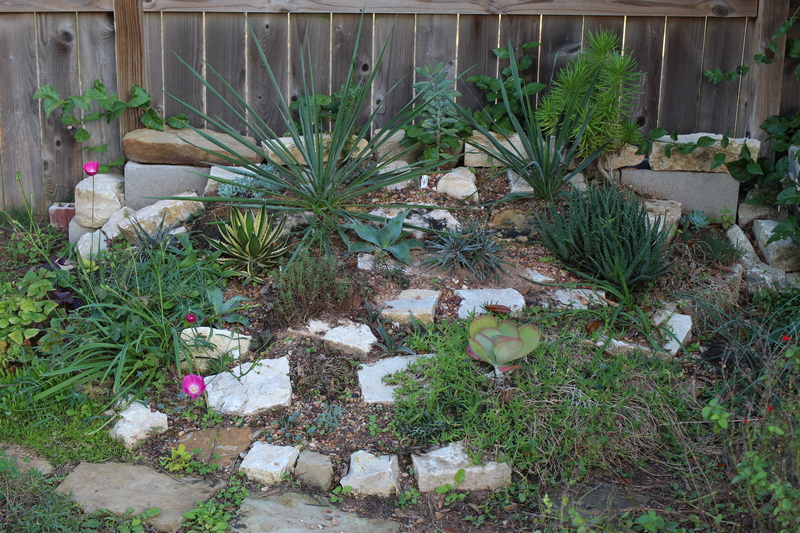Ever since I started seriously gardening, I've had some sort of rock garden to play around with. Back in Pennsylvania, our alpine areas had some semblance of a typical rock garden, suitable for displaying small-growing plants native to higher elevations. It featured a wide and ever-changing variety of plants from succulents to alpine cushion plants to penstemons, and kept expanding through the years as I needed more room to display plants, and also strived for a more naturalistic look using locally collected natural rock. Rock gardening in Texas is a different thing altogether. I'm not even quite sure I should call my current attempt a rock garden (xeric garden or succulent garden might be more apt), but that's what I've taken to calling it, so take that for what it's worth. There aren't really any local natural rocks to be had, so the stone incorporated into the garden area is mostly sourced from leftovers of stone facade construction in our new development, with a backing of a low cinderblock wall sourced from Ye Olde Home Depot. Much less naturalistic, therefore, than our rock garden up north. The bigger difference between the PA and TX garden areas is the types of plants they support; most of the denizens of my PA rock garden would expire from heat exhaustion on the first few hot days of our typical summers down here, so for the most part I don't even try. Instead, I'm trying my hand at a variety of succulents and xeric plants – some native to the southwestern US, some not. Mixed in are a few attempts to grow the tougher customers I remember from PA: some dianthus, penstemon, and aethionema. A good part of my seed-starting efforts in winter of 2018 was spent trying to grow various agaves; assuming they survive, they'll make their way into the rock garden, as may some of the rain lilies (habranthus and zephyranthes species) and yuccas I tried to grow. To give them the fast-draining soil they desire, I built most of the current rock garden on a base of a very sandy soil mix. Hopefully the plants that still like to sip some water in the heat of summer will find it not too inhospitable. If all those plants I'd like to grow in the rock garden actually survive and thrive, there is no doubt that I'll have to expand its area in years to come. But that seems to be par for the course with rock gardens. At least the current concept is fairly well extendable: the rock garden backs onto our fence, and is separated from it by a low wall of cinderblocks. Expanding the garden would mean extending the cinderblock wall outward (and perhaps upward), and hauling in more of that sandy soil. But I should be good for at least a year or so! Currently growing in our rock garden
Currently growing in the area around our rock gardenProgression of the rock garden
The earliest version of our rock garden was a standalone little area carved out of the lawn along the back fence. It served mostly as a home to succulents rescued from our Pennsylvania garden as well as a few new ones acquired in "succulent arrangements" for indoor display, with some muehlenbeckia and annual talinum fighting for dominance.
The newly rebuilt rock garden in October 2018, replanted with smallish specimens salvaged from the original rock garden.
I welcome comments about my web pages; feel free to use the form below to leave feedback about this particular page. For the benefit of other visitors to these pages, I will list any relevant comments you leave, and if appropriate, I will update my page to correct mis-information. Note that I discard any comments including html markups, so please submit your comment as plain text. If you have a comment about the website as a whole, please leave it in my guestbook. If you have a question that needs a personal response, please e-mail me.
Last modified:
June 17, 2021 |
|||||||||||||||||||||||||||||||||||




